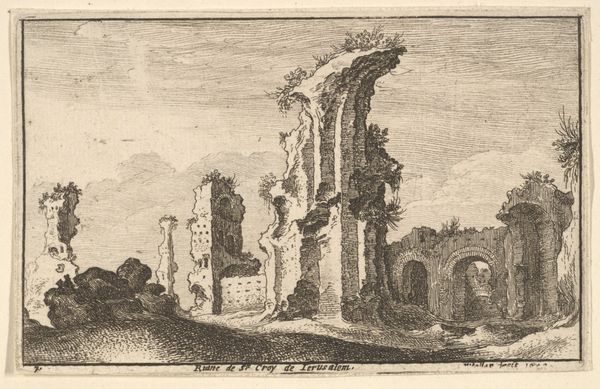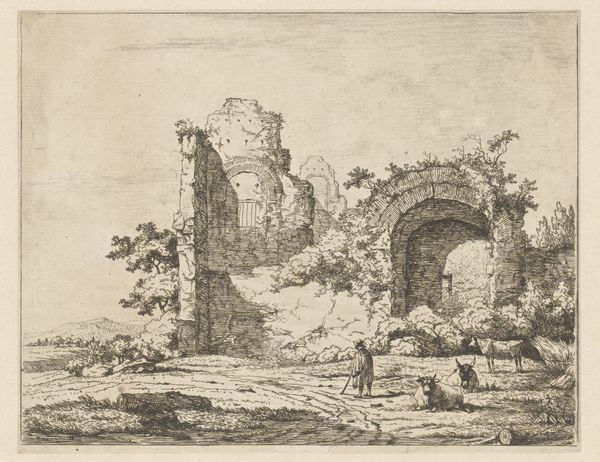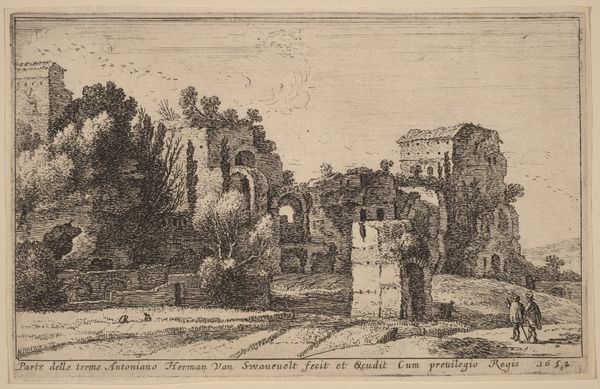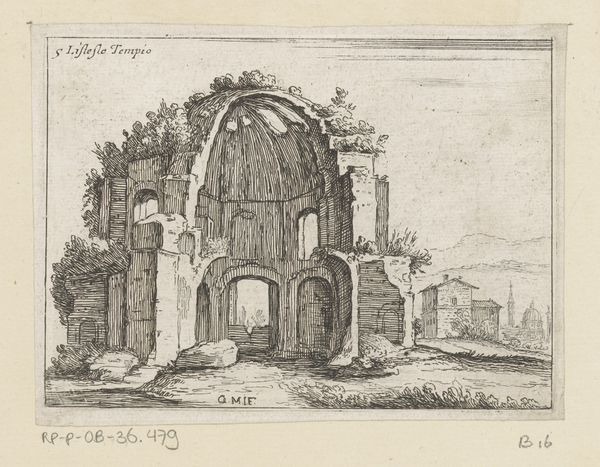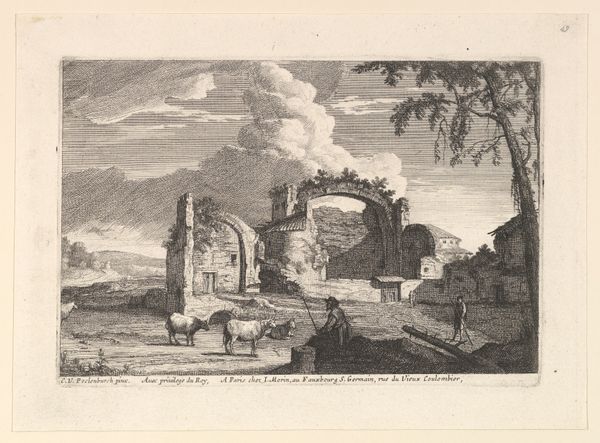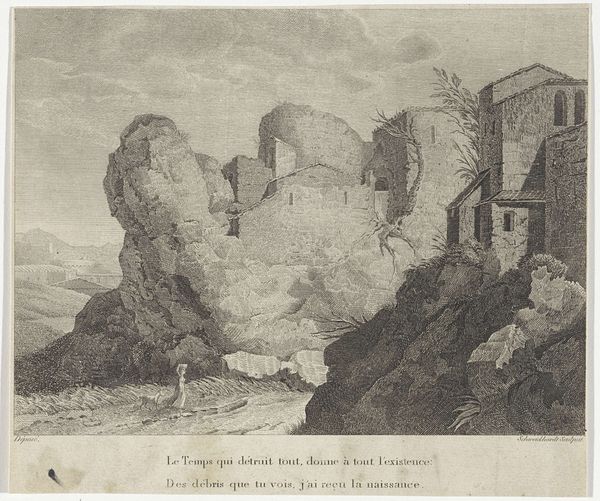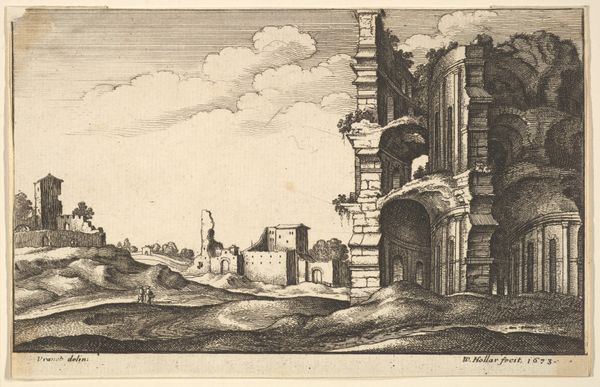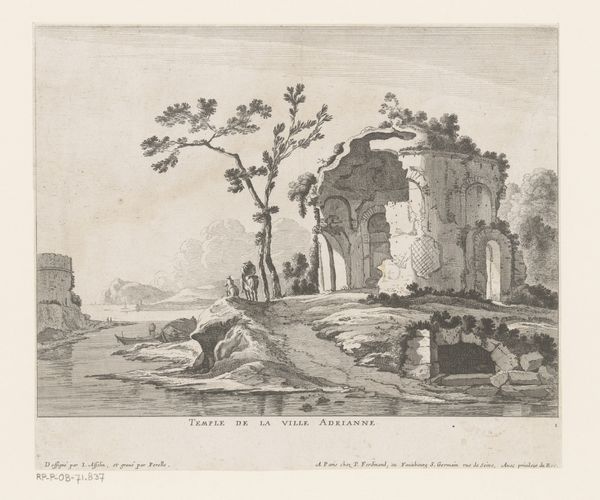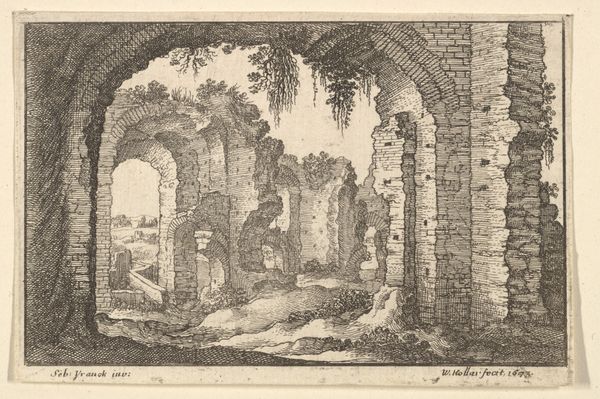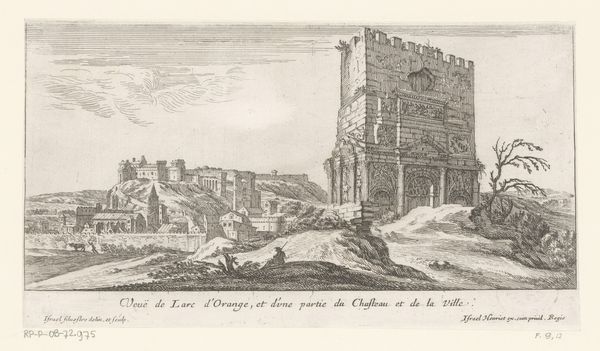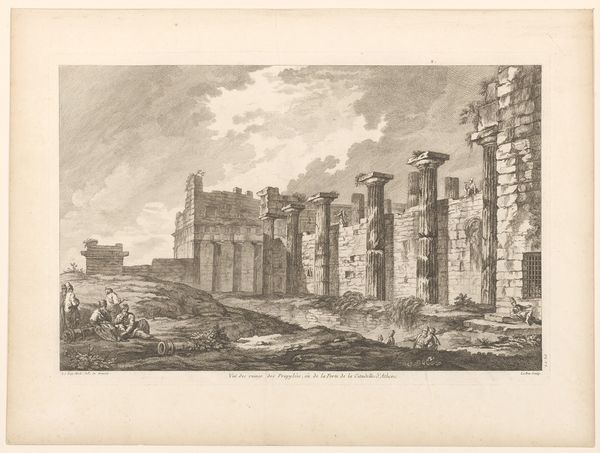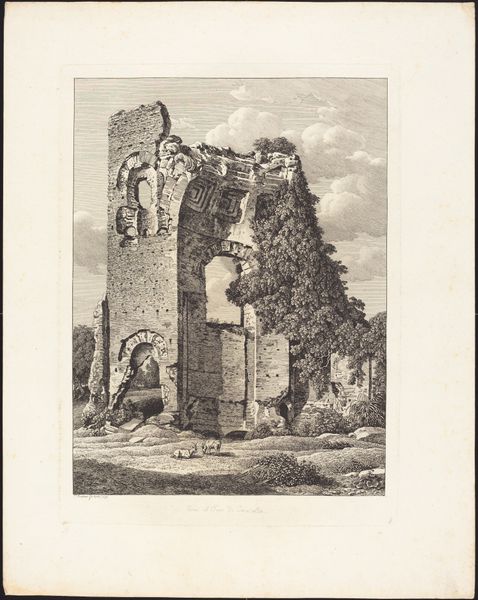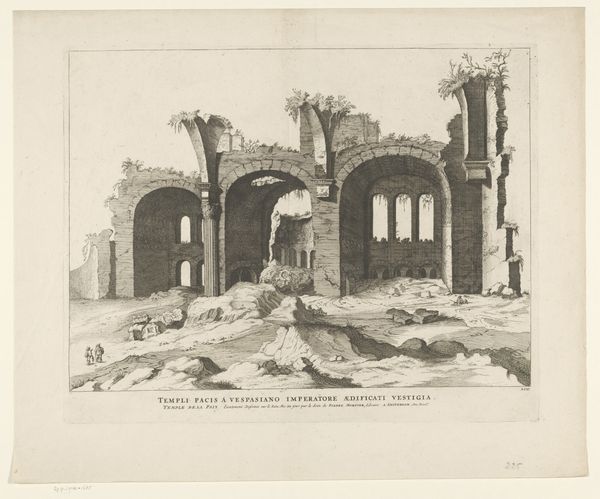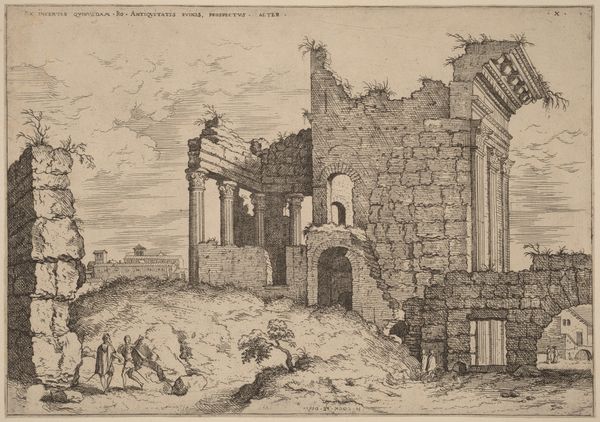
drawing, print, etching, architecture
#
drawing
#
baroque
# print
#
etching
#
landscape
#
history-painting
#
architecture
Dimensions: Sheet: 2 11/16 × 4 3/16 in. (6.9 × 10.7 cm)
Copyright: Public Domain
Wenceslaus Hollar made this print of the Temple of the Tiburtine Sybil using etching, a printmaking technique that democratized image production in the 17th century. The etching process involves coating a metal plate with a waxy, acid-resistant substance called ‘ground.’ The artist then scratches an image into the ground, exposing the metal. When the plate is immersed in acid, the exposed lines are bitten into the surface. Ink is applied to the etched lines, and the plate is pressed onto paper. The pressure of the printing press forces the paper into the inked lines, transferring the image. Etching allowed for detailed, reproducible images, making art more accessible. It enabled artists like Hollar to disseminate views of landscapes and architecture, responding to a growing market for such imagery among a broader public. The lines of the etching emphasize the crumbling texture of the Temple, drawing attention to its materiality. The etching process itself, while requiring skill, was less physically demanding than engraving, reflecting a shift in artistic labor, and the changing relationship between artist, production, and audience. By understanding the materials and processes behind it, we can appreciate how this print participates in a larger social and economic context.
Comments
No comments
Be the first to comment and join the conversation on the ultimate creative platform.
